Discharging your sump pump into the city’s sanitary sewer system is bad news. While this might seem like an easier and more attractive option than running a discharge tube from the sump pump to the exterior, it’s illegal in most cities here in Minnesota when the home is connected to the city sewer.
What it looks like
In layman’s terms, you can’t connect your sump pump discharge to the same place where you flush your toilets. That’s called the sanitary sewer system. When this happens, it’ll look something like this:
This is pretty obvious and blatant, but sometimes it’s more subtle. The photo below shows a corrugated drain line running from the sump pump to the floor drain. Where does the floor drain go? To the sanitary sewer, of course.
Finally, one more version of this is a very shallow sump pit with a floor drain at the bottom of it. The black corrugated tubing coming into the sides of the pit is drain tile, and the floor drain at the bottom drains to the sanitary sewer. In Minneapolis, this is a required repair item for their Truth-In-Sale of Housing program.
But it’s not always this obvious. Sometimes, we just find a hole in the basement floor with a floor drain at the bottom. This is the same thing, just without drain tile.
Why does this matter?
Cities don’t allow this because you’re basically dumping rainwater into the sanitary sewer system. Cities have completely separate drain systems for rainwater, called storm sewers. Those things take rainwater directly to our rivers and lakes. When we dump rainwater into sanitary sewers, we overload the sewage treatment facilities, which can cause two big problems:
- Untreated sewage is forced into our rivers and lakes. Yuck.
- Sewage backs up into people’s homes. Double yuck.
The City of Golden Valley has some excellent explanations of all of this at their website, explaining how this costs hundreds of millions of dollars each year. This is such a serious issue that many cities throughout the metro area have been forced to conduct inflow and infiltration (I/I) inspections. Not only do they look for illegal sump pump connections, but they also scope the sewer line to make sure rainwater can’t find its way in there through failed joints and cracks.
Additionally, sump pumps shouldn’t discharge to the sanitary sewer because municipal water departments bill homeowners for their sewer usage based on their water usage. When a sump pump discharges into the sanitary sewer, the city has no way of tracking and billing for this additional usage of the sewer. When a homeowner discharges their sump pump into the sanitary sewer, they’re getting a service for free that everyone else has to pay for
If you have this type of setup at your own home, the ‘good citizen’ thing to do is to make the sump pump discharge to the exterior. In some cities, they’ll even let you connect your sump pump discharge directly to the storm sewer system, which makes for a very solid, inconspicuous installation.

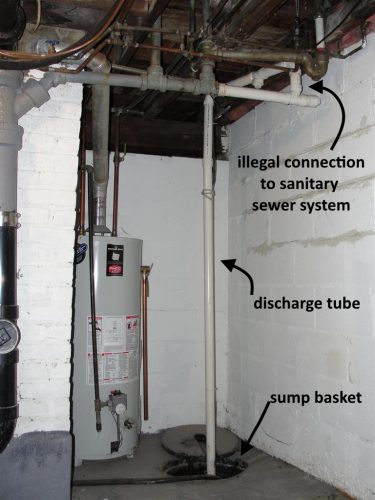
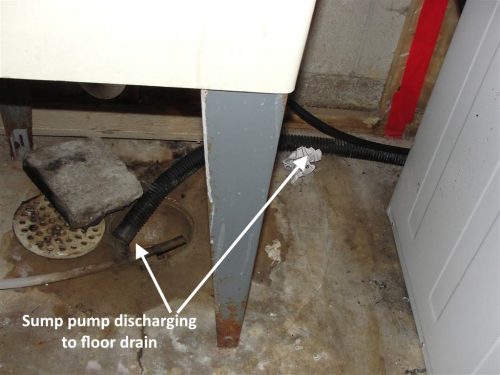
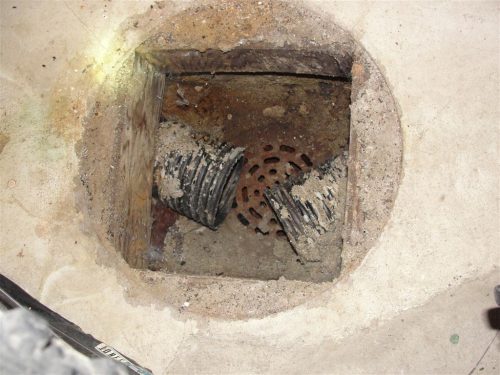

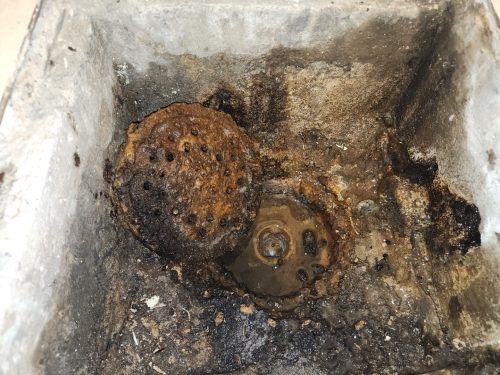
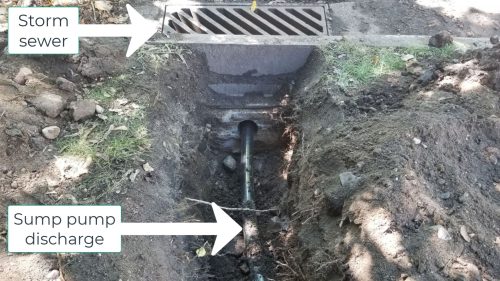
Beaver Systems | Structure Tech Home Inspections - Part 1
August 15, 2013, 1:29 pm
[…] to the sanitary sewer system through the basement floor drain. As I mentioned in a previous post, storm water should not drain to the sanitary sewer. On the other hand, if a Beaver System directs water to a sump basket with a sump pump, […]
Blair L.
October 14, 2013, 3:39 pm
Hi,
When you have different options as to where the water can be discharged to the exterior, how do you know which is the best place to position the discharge pipe?
Any pitfalls?
Reuben Saltzman
October 14, 2013, 4:14 pm
The discharge tube needs to terminate in a place where it won’t cause a nuisance, and where the water won’t drain back towards the property.
Top 20 Home Inspection Photos from 2013 | Structure Tech Home Inspections
December 31, 2013, 4:34 am
[…] Pump to Sanitary Sewer – we blogged about this topic earlier this year: http://www.structuretech1.com/2013/07/sump-pump-shouldnt-discharge-into-the-sanitary-sewer/ . This photo shows one of the craziest ways to get it […]